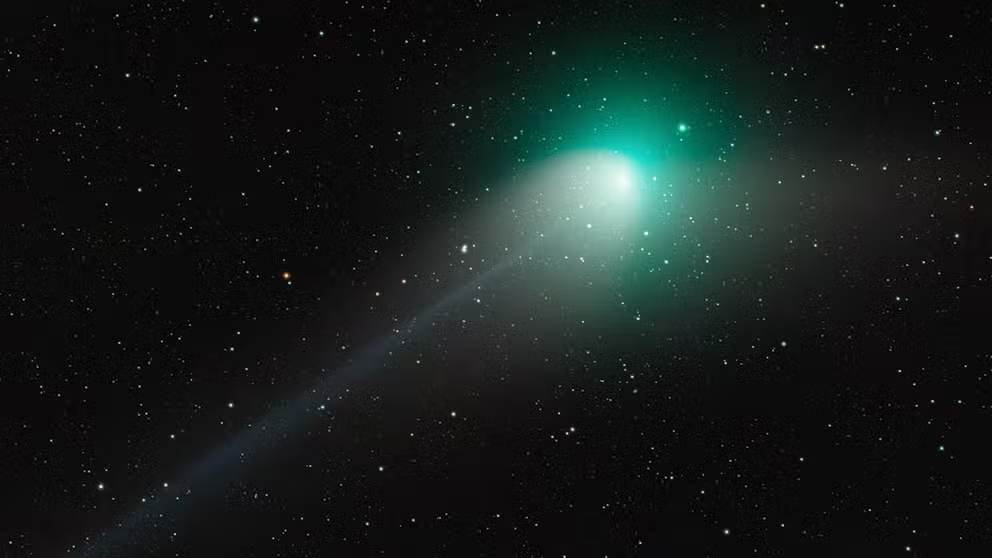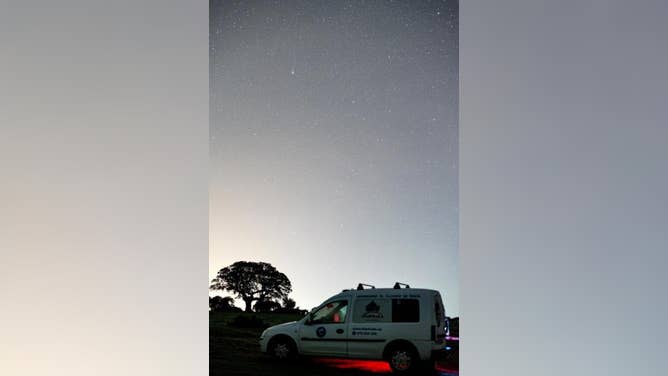How to watch tonight’s livestream of the once-in-a-lifetime green comet
Called Comet C/2022 E3 ZTF, the comet is expected to fly by our planet this week. Here's how the stargazers can watch a livestream of the flyby from the comfort of their homes.
Rare green comet sighting: Where and when to see it
This celestial sighting is a bit like space-speed dating. Astronomers only just learned of Comet C/2022 E3's existence, and it will be gone before we know it. Learn how it was discovered and why a naked-eye comet is rare.
CECCANO, Italy – A new image and time-lapse captured Sunday morning show the rare "green comet" as it makes its closest approach to Earth in 50,000 years.
The new image and footage of Comet C/2022 E3 ZTF were taken by a powerful telescope just south of Rome that is part of the Virtual Telescope Project.
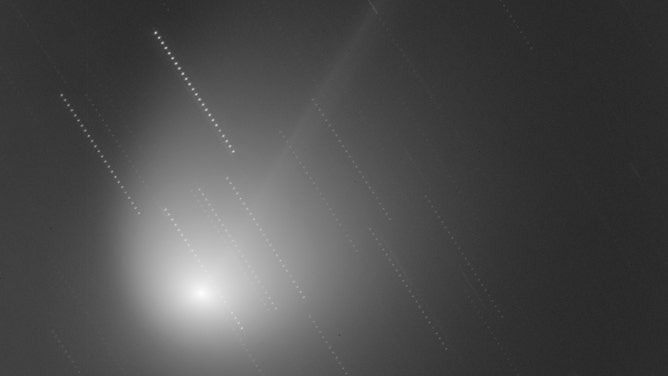
Image of the green comet. Captured on Sunday, Jan. 29.
(Gianluca Masi, Ceccano (FR), Italy / MPC code: 470 Ceccano / The Virtual Telescope Project / FOX Weather)
The PlaneWave 17″+Paramount ME+SBIG STL-6303E telescope, better known as "Elena," snappy the images as it tracked the motion of the comet with stars streaking through the image.
HOW THE TELESCOPE BECAME OUR WINDOW INTO THE UNIVERSE
The black-and-white images show the comet as a piercing, white dot surrounded by a glowing aura. Behind the dot is a long white tail.
When and how you can see the comet
Between Wednesday and Thursday, the "green comet" will make its closest approach to Earth. According to NASA, Comet C/2022 E3 ZTF will be about 2.4 light-minutes from our planet as it zooms on past.
Timelapse shows rare comet making its approach to Earth
The images of Comet C/2022 E3 ZTF were captured on Sunday from a telescope in Italy on Jan. 29, 2023. (Courtesy: Gianluca Masi / Virtual Telescope Project)
The Virtual Telescope Project, along with Telescope Live, will give stargazers worldwide the opportunity to watch the comet fly by during a live stream. It will begin at 11 p.m. EST Wednesday. To watch, stargazers need only visit the Virtual Telescope Project's webTV page.
For those hoping the catch their own view of the comet, the sky must be dark, moonless and as free of light pollution as possible, according to Thomas Prince, astronomer and director of the W.M. Keck Institute for Space Studies at Caltech.

Telescopic image of the comet from January 19, 2023.
(Dan Bartlett / NASA)
Even though this is considered a bright "naked-eye" comet, using a pair of binoculars will definitely help. To find the comet, look for a bright, fuzzy object in the sky.
If you miss the comet on Feb. 2, don’t fret. The comet will still be viewable with a telescope until mid-February.
After that, however, it may take a few million years before it flies by Earth again.
When the green comet was discovered
Comet C/2022 E3 ZTF originated from the Oort cloud, a giant, spherical collection of icy objects that encapsulates our solar system, according to NASA.
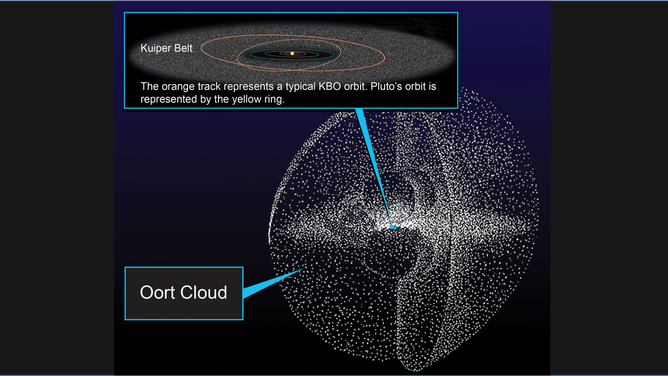
An illustration of the Kuiper Belt and Oort Cloud in relation to our solar system.
(NASA / NASA)
The Oort cloud is considered a "cometary reservoir" and is believed to be the source of comets that take longer than 200 years to orbit the Sun.
WATCH OUT FOR THESE ASTRONOMICAL EVENTS IN 2023
Comet C/2022 E3 ZTF was originally discovered on March 2, 2022, by Caltech astronomer Bryce Bolin, who used a wide-field survey camera at the National Science Foundation’s Zwicky Transient Facility near San Diego, California.
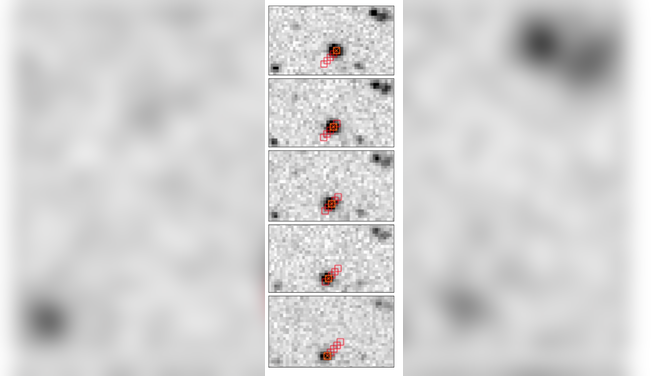
Five images taken by the Zwicky Transient Facility at Caltech show Comet C/2022 E3 (ZTF) moving. (Image credit: Zwicky Transient Facility/National Science Foundation)
Since its discovery, the comet has become brighter as it makes its way through our solar system.
A more colorful view of Comet C/2022 E3 ZTF was seen on Jan. 19, when it was photographed by a telescopic camera near Salamanca in western Spain.
The comet's center was surrounded by shades of teal and green. Behind the comet was a faint dust tail, along with a long ion tail.
